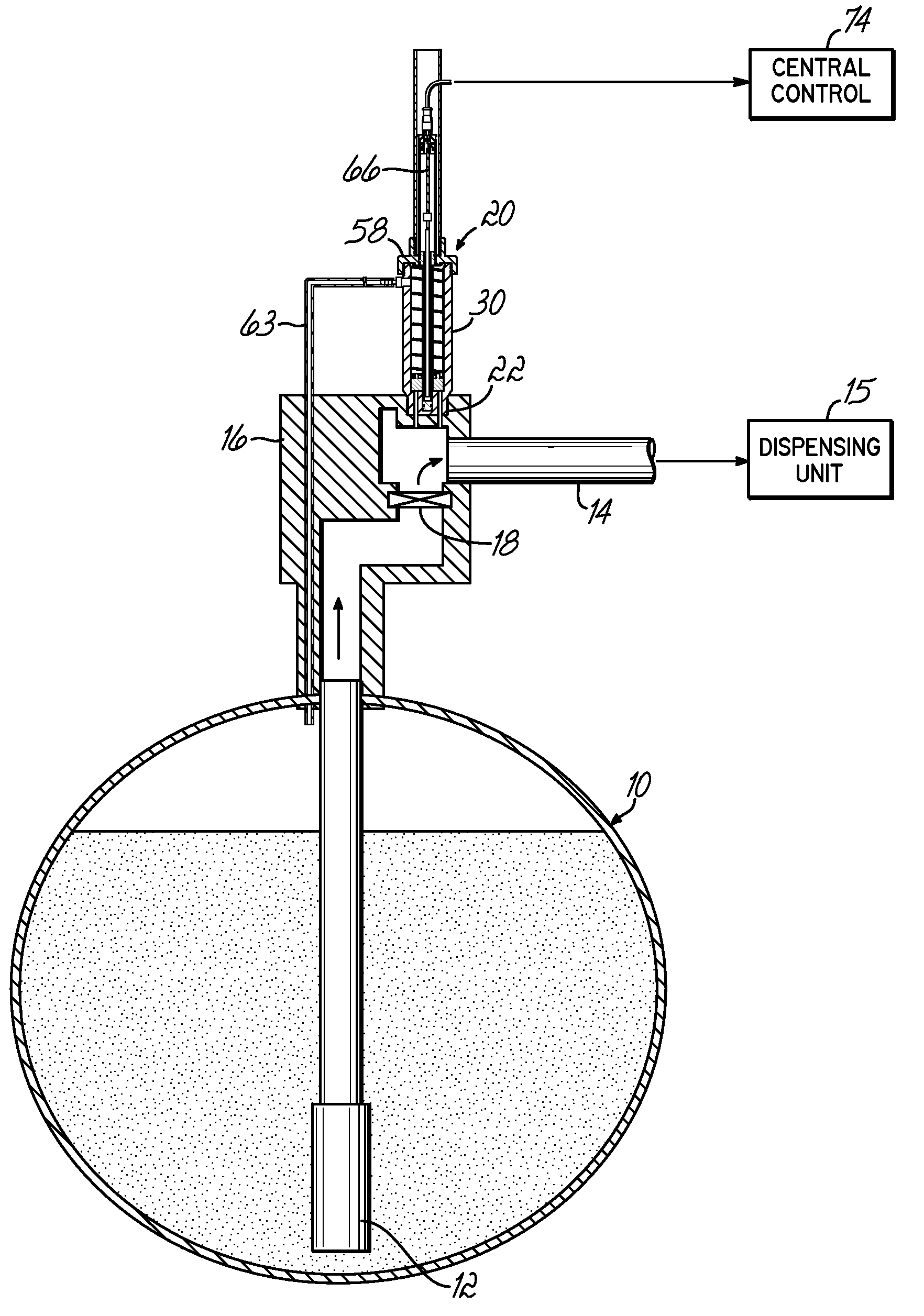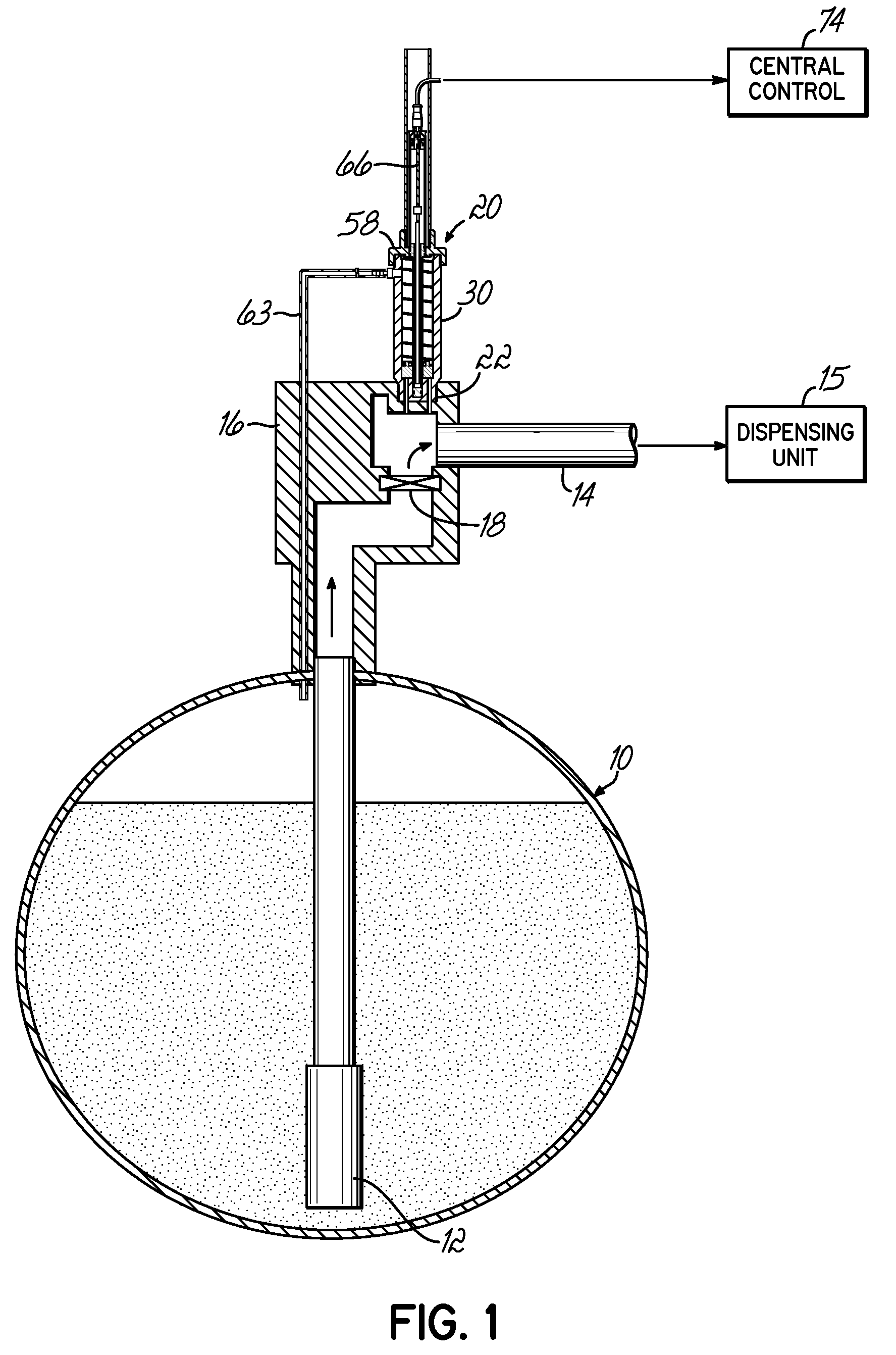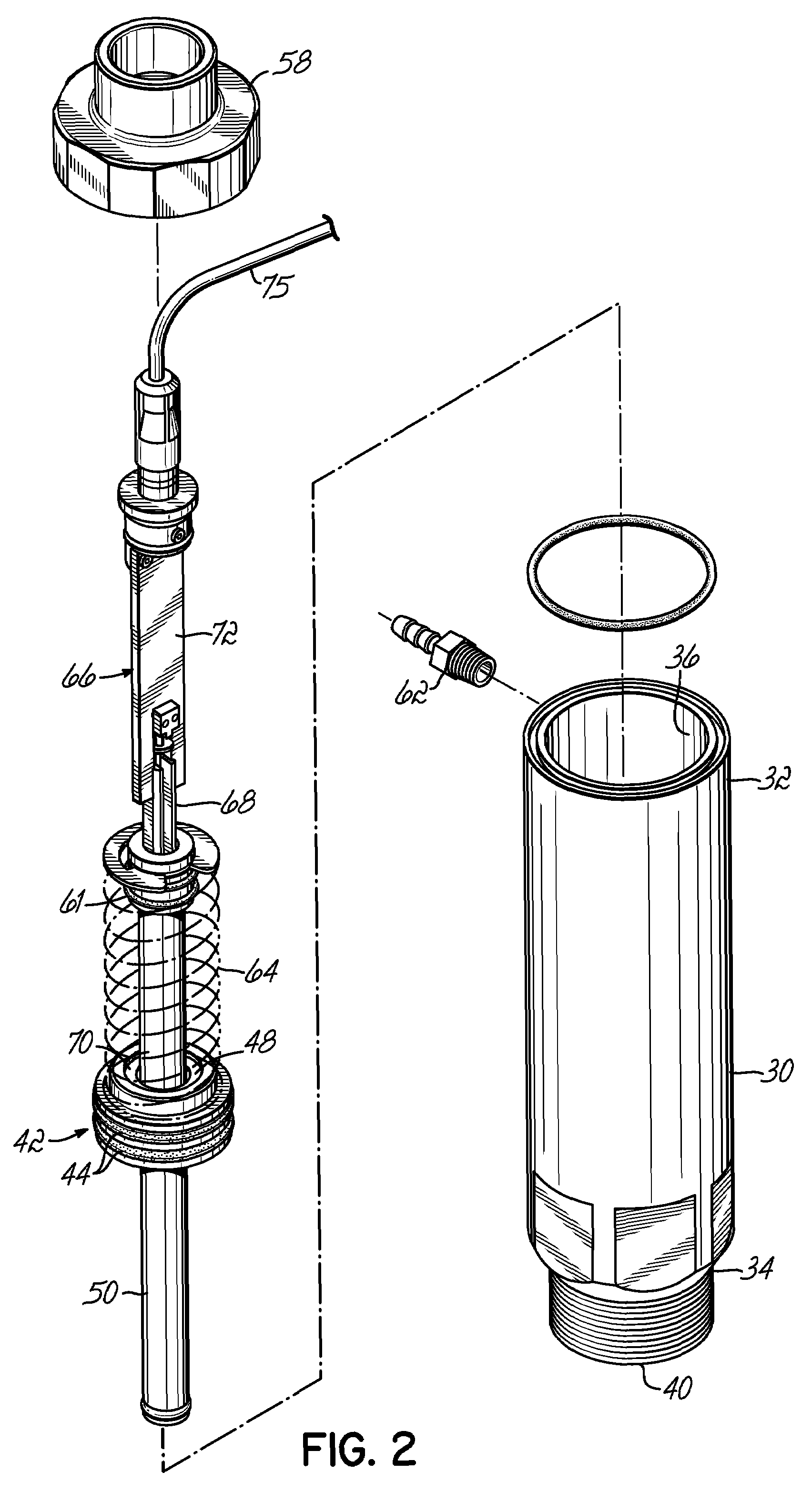Line leak detector
a leak detection and leak detection technology, applied in the direction of instruments, fluid-tightness measurement, liquid/fluent solid measurement, etc., can solve the problems of costly and time-consuming clean up or remediation, leakage into the environment of petroleum products, including gasoline, and achieve the effect of avoiding flow rate restrictions on fuel delivery lines
- Summary
- Abstract
- Description
- Claims
- Application Information
AI Technical Summary
Benefits of technology
Problems solved by technology
Method used
Image
Examples
Embodiment Construction
[0031]An exemplary fuel dispensing system of the invention is shown in FIG. 1 and generally includes an underground storage tank (“UST”) 10 for storing a fuel, a submersible pump 12 located in the tank 10, and a fluid conduit line 14 that transports the fuel under pressure to one or more dispensing units 15, shown schematically in FIG. 1. Typically, the fluid conduit line 14 is coupled to the submersible pump 12 via a pump manifold 16 that is typically located external to tank 10, such as in a covered manway. Pump manifold 16 includes a check valve 18 for preventing fuel from flowing back into tank 10. Because check valve 18 prevents any fuel from flowing back into tank 10, when the dispensing unit 15 is off, thus preventing fuel from flowing from conduit line 14, the fluid conduit line 14 defines a closed system containing an amount or volume of fuel that depends on several factors including length of conduit line 14, size of conduit line 14, and other factors. As mentioned above, ...
PUM
 Login to View More
Login to View More Abstract
Description
Claims
Application Information
 Login to View More
Login to View More - R&D
- Intellectual Property
- Life Sciences
- Materials
- Tech Scout
- Unparalleled Data Quality
- Higher Quality Content
- 60% Fewer Hallucinations
Browse by: Latest US Patents, China's latest patents, Technical Efficacy Thesaurus, Application Domain, Technology Topic, Popular Technical Reports.
© 2025 PatSnap. All rights reserved.Legal|Privacy policy|Modern Slavery Act Transparency Statement|Sitemap|About US| Contact US: help@patsnap.com



